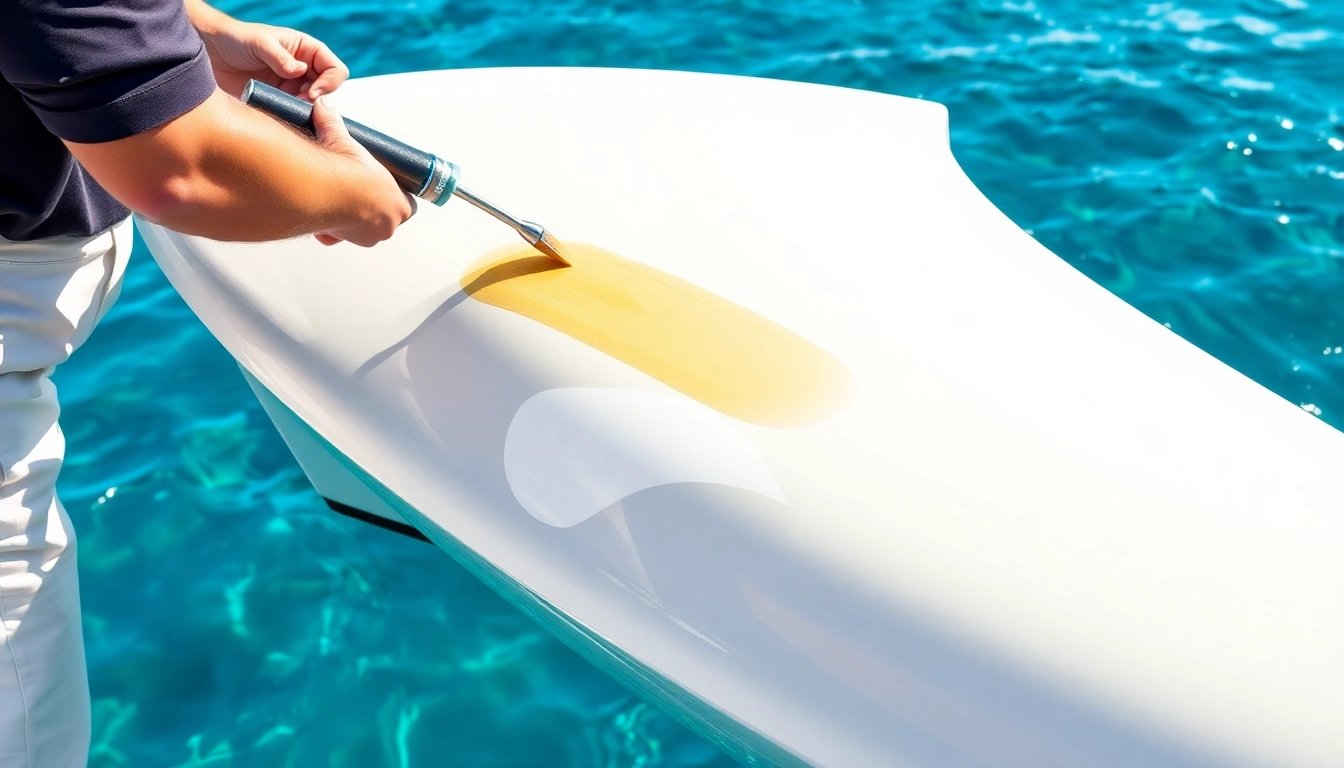Understanding Boat Sealing: Fundamentals and Benefits
What Is Boat Sealing?
Boat sealing, often referred to as Boots Versiegelung, is a specialized protective coating designed to shield a boat’s gelcoat, paint, and other surfaces from environmental stressors. This process involves applying a high-quality sealant or coating that creates a durable barrier against water ingress, UV radiation, salt, dirt, and other pollutants. Unlike traditional cleaning or waxing, sealing penetrates the surface to provide a long-lasting, chemical-resistant shield, preserving the boat’s appearance and structural integrity over time.
Sealing is especially vital for boats exposed to harsh conditions such as saltwater environments, ultraviolet rays, and pollutants. It maintains the glossy, smooth finish of the gelcoat, prevents oxidation, and minimizes the need for frequent re-polishing or repairs. Proper sealing extends the lifespan of your vessel, ensures optimal performance, and can also enhance fuel efficiency by maintaining surface smoothness.
Advantages of a High-Quality Sealing System
Investing in a top-tier boat sealant offers a multitude of benefits, including:
- Enhanced Protection: Shields against UV damage, saltwater corrosion, and environmental contaminants.
- Superior Glance and Shine: Maintains a reflective, mirror-like gelcoat finish that impresses at dock or in open water.
- Ease of Maintenance: Reduces dirt and grime buildup, making cleaning easier and less frequent.
- Long-Term Cost Savings: Extends intervals between expensive repairs and restorative polishing.
- Improved Hydrophobic Properties: Repels water effectively, which discourages algae and moss growth while facilitating quick drying.
A high-quality sealant is an investment for boat owners seeking longevity and aesthetic appeal, especially when used in conjunction with other maintenance products like the Boat & Caravan Care products.
Key Characteristics and Materials of Effective Boat Sealants
Choosing the right boat sealant involves understanding essential properties and suitable materials. The most effective products are typically based on advanced polymer or ceramic technology, providing a seamless, durable, and elastic coating. Major features include:
- Hydrophobicity: The capability to repel water, reducing moisture adhesion.
- UV Resistance: Protection from sun-induced degradation.
- Chemical Resistance: Withstanding salt, fuel, and cleaning agents.
- Ease of Application: Smoothly spreading without streaks or bubbles.
- Durability: Withstanding environmental variations over several months or years.
Materials such as nanotechnology-infused polymers and ceramic-based compounds are increasingly popular due to their robust protective qualities. These materials bond chemically with the gelcoat or paint, forming an almost indestructible shield.
How to Select the Right Boat Sealing Product
Criteria for Choosing the Optimal Sealant
Selecting the right sealant depends on several key criteria:
- Surface Compatibility: Ensure the product is suited for gelcoat, painted, or composite surfaces.
- Environmental Resistance: Consider exposure levels—saltwater, freshwater, or inland lakes.
- Ease of Application and Removal: Opt for products that allow straightforward application and polishing.
- Longevity: Determine the expected lifespan and reapplication intervals.
- Cost and Value: Balance between initial investment and long-term benefits.
Comparing Different Sealants
Market options range from liquid waxes to advanced ceramic coatings. For example:
- Traditional Waxes: Easy to apply but often require frequent reapplication (every 3-6 months).
- Polymer Sealants: Offer increased durability and UV resistance, lasting up to a year with good maintenance.
- Ceramic Coatings: Provide superior protection with hydrophobic and anti-adhesion properties, lasting 2-3 years but requiring precise application.
Brands like Gtechniq and Menzerna have pioneered innovative formulations that can be effectively used on boats, offering both protection and a high-gloss finish.
Application Techniques for Optimal Results
Preparation and Cleaning
Thorough preparation is crucial for successful sealing. Begin by cleaning the boat meticulously, removing dirt, algae, and residues with a dedicated cleaning agent such as the Power Cleaner. Use quality microfiber towels like the BCC Microfaser Towel to dry surfaces uniformly and eliminate streaks.
Inspect surfaces for cracks or damages and repair them before applying any sealant. A smooth, clean, and dry surface ensures maximum adhesion and longevity of the coating.
Applying the Sealant
Follow manufacturer instructions carefully. Typically, apply a thin, even layer using a foam applicator or soft cloth. For large surfaces, tools like the BCC Waffelpad or Polierschwamm can facilitate uniform coverage. Work in manageable sections, from bow to stern, and avoid applying in direct sunlight to prevent premature drying and streaks.
For ceramic coatings, multiple thin layers may be recommended, with curing time specified by the manufacturer.
Drying and Post-Application Care
Allow the product to cure as per instructions, usually 24-48 hours. During this period, avoid exposing the boat to water or heavy traffic. Use high-quality towels like the BCC Drying Towel to buff out any excess and enhance gloss. Some advanced sealants develop a hydrophobic effect after curing, which can be tested by water beading on the surface, indicating effective protection.
Maintenance and Care Post-Sealing
Cleaning for Longevity
After sealing, regular maintenance ensures protected surfaces retain their brilliance. Use gentle, pH-neutral cleaners suitable for gelcoat or paint finishes. The BCC Towels Vorteilspack offers an economical way to maintain cleanliness without scratching or dulling the surface.
Avoid abrasive scrubbers or harsh chemical detergents that can degrade the sealant, reducing its effectiveness prematurely.
Repairing and Reapplying
If you notice areas where the sealant has degraded or been damaged, reapply the product following the same thorough cleaning process. For localized damages, polishing with a recommended Power Polish can restore surface smoothness before resealing. Typically, reapplication intervals depend on environmental conditions and product durability, but a yearly check is advised for sea-going vessels.
Frequently Asked Questions about Boat Sealing
How Often Should I Seal My Boat?
Most high-quality coatings require reapplication every 1-3 years, depending on exposure conditions. For boats exposed to saltwater, higher UV intensity, or frequent use, annual reapplication enhances protection. Regular inspections help determine when re-sealing is needed.
Can I Apply Sealant Myself?
Absolutely. With proper preparation and adherence to instructions, DIY sealing is both feasible and cost-effective. Use suitable tools like foam applicators and microfiber cloths to ensure even coverage and avoid streaks.
However, for complex or large boats, professional application may be advisable to ensure optimal coating and adhesion.
What Are Common Errors and How to Avoid Them?
Common mistakes include applying sealants in direct sunlight, overapplying, or skipping surface preparation. These can lead to streaks, poor bonding, or uneven protection. Always work in shaded conditions, follow the manufacturer’s guide, and ensure surfaces are clean and dry.
Using quality tools like the BCC Polierpuck or Waffelpad will also improve results significantly.





